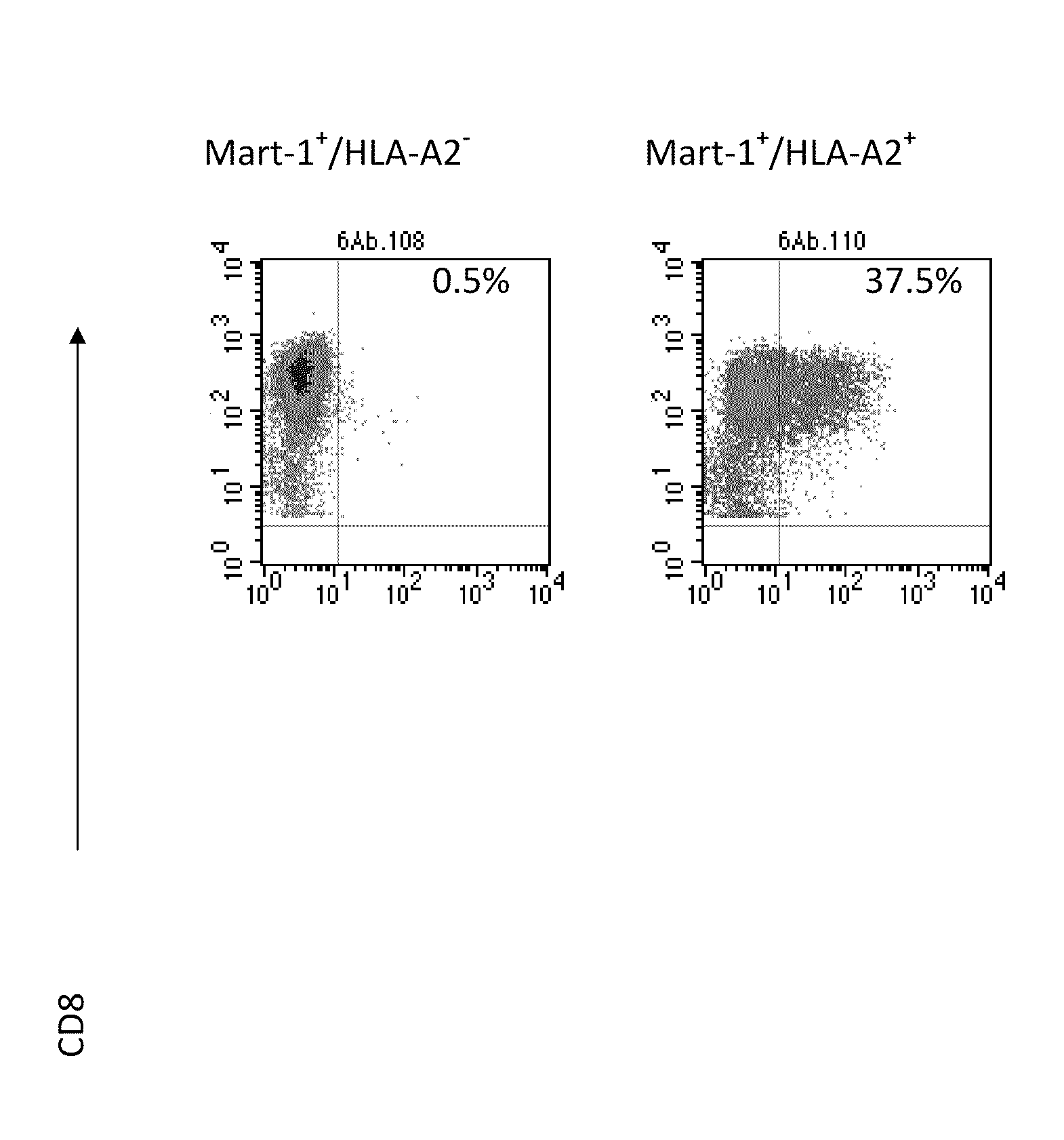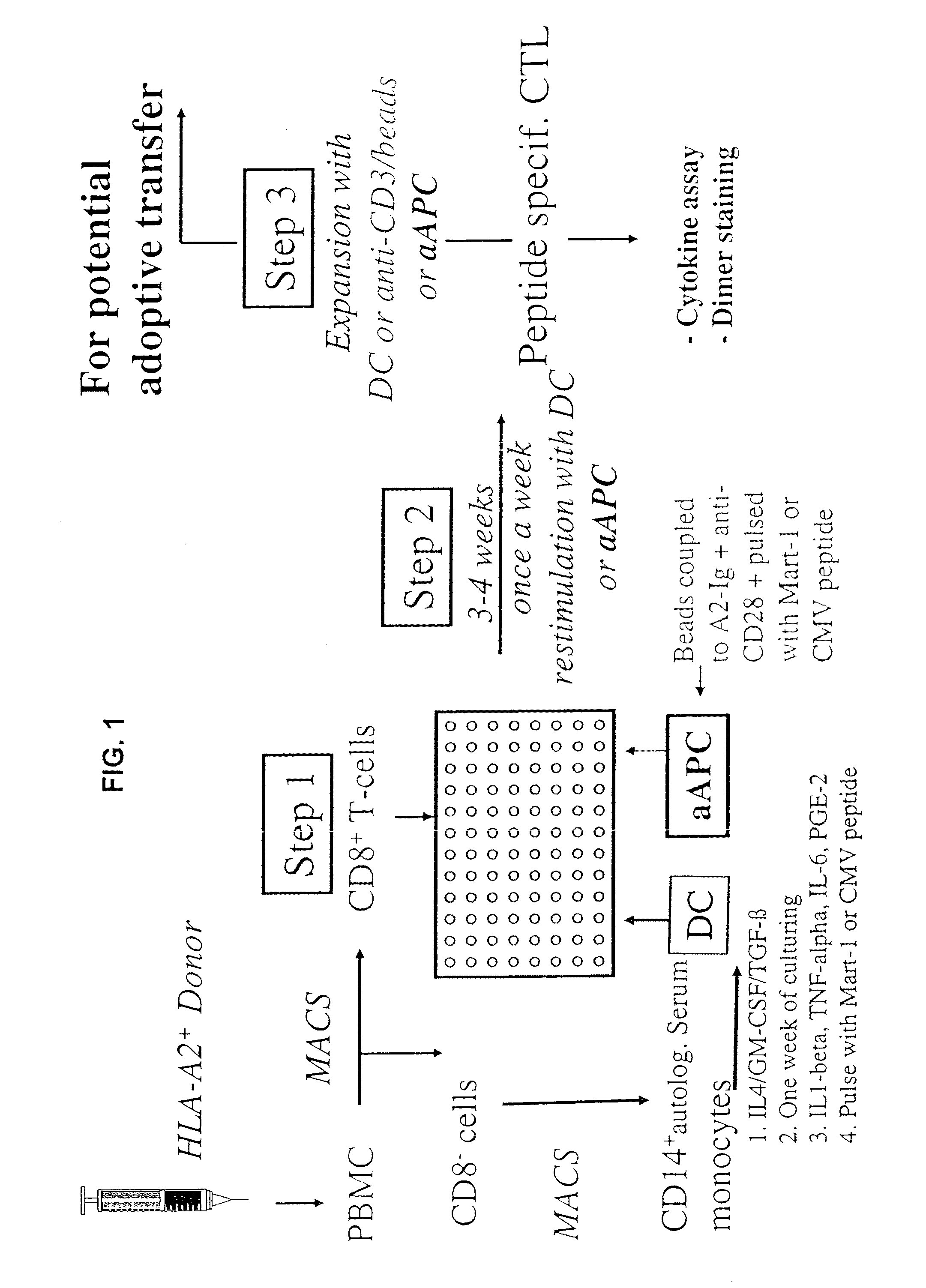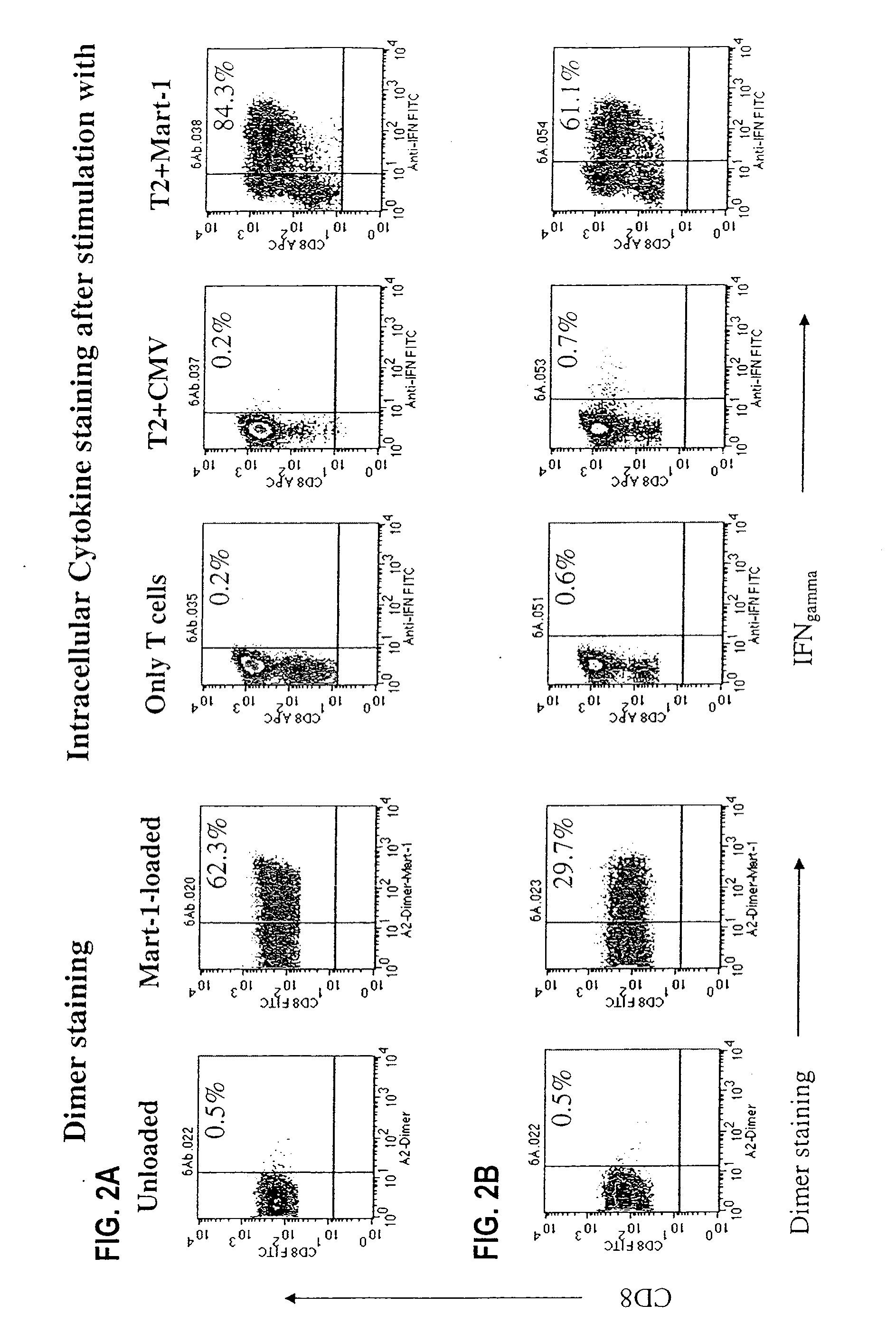Reagents and Methods for Engaging Unique Clonotypic Lymphocyte Receptors
- Summary
- Abstract
- Description
- Claims
- Application Information
AI Technical Summary
Benefits of technology
Problems solved by technology
Method used
Image
Examples
example 1
Materials and Methods
[0197]Cell Lines. TAP-deficient 174CEM.T2 (T2) cells and melanoma cell lines were maintained in M′ medium (Oelke et al., Scand. J. Immunol. 52, 544-49, 2000) supplemented with 10% FCS.
[0198]Peptides. Peptides (Mart-1, ELAGIGILTV, SEQ ID NO:3; CMVpp65, NLVPMVATV, SEQ ID NO:4) used in this study were prepared by the JHU core facility. The purity (>98%) of each peptide was confirmed by mass-spectral analysis and HPLC.
[0199]HLA-A2.1+ Lymphocytes. The Institutional Ethics Committee at The Johns Hopkins University approved the studies discussed in the examples below. All donors gave written informed consent before enrolling in the study. Healthy volunteers and a melanoma patient, donor #7, were phenotyped HLA-A2.1 by flow cytometry. The melanoma patient had extensive metastatic disease with lung, liver, and lymph node metastases. PBMC were isolated by Ficoll-Hypaque density gradient centrifugation.
[0200]Generation of aAPC. aAPC were generated by coupling “HLA-Ig” (des...
example 2
Induction and Expansion of Mart-1- and CMV-Specific CTL by aAPC
[0206]This example demonstrates the induction and expansion of antigen-specific CTL by two clinically relevant targets, CMV-peptide pp65 and Mart-1. These peptides have widely varying affinities for their cognate TCR. The CMV-peptide pp65 is known to be a high affinity peptide, whereas the modified Mart-1 peptide, derived from a melanocyte self antigen, is a low affinity peptide (Valmori et al., Int. Immunol. 11, 1971-80, 1999).
[0207]Current approaches use autologous peptide-pulsed DC to induce antigen-specific CTL from normal PBMC (FIG. 1). These approaches often use DC- or CD40L-stimulated autologous B cells to induce antigen-specific CTL over 2-4 stimulation cycles (FIG. 1, Step 2) until the antigen-specific CTL become a prominent part of the culture. We, therefore, compared aAPC induction to induction by DC. T cells were isolated, purified, and induced with either Mart-1-loaded aAPC or monocyte-derived autologous DC-...
example 3
Recognition of Endogenously Processed Antigen by aAPC-Induced PBMC
[0216]A useful criterion in evaluating CTL function is the recognition of targets expressing endogenous antigen-HLA complexes. Initial work using peptide-pulsed DC for expansion of melanoma-specific CTL resulted in low affinity CTL that mediated lysis of targets pulsed by the cognate antigen but often did not recognize melanoma targets that endogenously expressed antigen-HLA complexes. Yee et al., J. Immunol. 162, 2227-34, 1999. We therefore studied the ability of aAPC-induced CTL to recognize endogenous Mart-1 or pp65 CMV antigen (FIG. 3).
[0217]For the ICS staining the cells were incubated with target cells in regular medium without cytokines. To increase the sensitivity of the ICS assay, a low dose of PMA and ionomycin was added to the medium. As described in Perez-Diez et al., Cancer Res. 58, 5305-09, 1998, this approach enabled us to detect more antigen specific T cells in the population. Differences in the result...
PUM
| Property | Measurement | Unit |
|---|---|---|
| Time | aaaaa | aaaaa |
| Time | aaaaa | aaaaa |
| Time | aaaaa | aaaaa |
Abstract
Description
Claims
Application Information
 Login to View More
Login to View More - R&D
- Intellectual Property
- Life Sciences
- Materials
- Tech Scout
- Unparalleled Data Quality
- Higher Quality Content
- 60% Fewer Hallucinations
Browse by: Latest US Patents, China's latest patents, Technical Efficacy Thesaurus, Application Domain, Technology Topic, Popular Technical Reports.
© 2025 PatSnap. All rights reserved.Legal|Privacy policy|Modern Slavery Act Transparency Statement|Sitemap|About US| Contact US: help@patsnap.com



